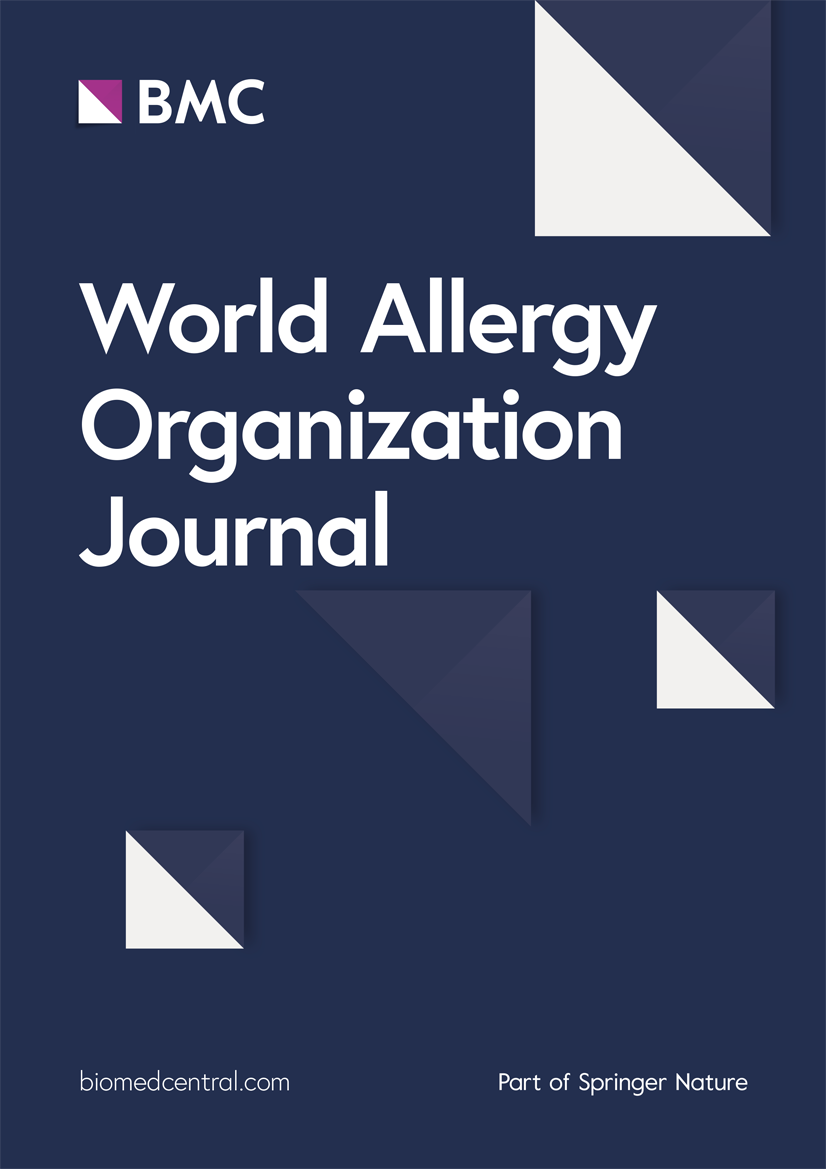Methodology of the international cross-sectional prevalence and severity study of pediatric and adult IgE-mediated food allergies (ASSESS FA)
IF 4.3
2区 医学
Q2 ALLERGY
引用次数: 0
Abstract
Background
The burden and prevalence of food allergy (FA), a condition known to negatively impact the quality of life (QoL) of patients and their families, vary across countries due to cultural habits and clinical practices and have been assessed differently among previous studies. To date, no validated scale exists to measure FA severity risk.
Objective
The study objectives were to develop a standardized methodology to estimate FA point prevalence in children and adults in 9 countries, to assess FA impact on QoL, and to construct a framework to define FA severity risk based on QoL and FA clinical severity.
Methods
This was a cross-sectional, international study that collected self-reported data through an online quantitative survey. Participants were recruited from general population panels: parents/caregivers of children aged 6 months-17 years, and adults aged 18–65 years. The survey instrument was developed by a panel of clinical FA experts and epidemiologists.
Results
Weighted prevalence rates were calculated for the 4 generated case definitions of FA (self-reported, physician-diagnosed, symptom-convincing, and confirmed FA). Several validated scales, including the Food Allergy Quality of Life Questionnaire (FAQLQ) and the Food Allergy Independent Measure (FAIM), were used to assess FA impact on QoL in patients with symptom-convincing FA. Four FA severity risk profiles were generated: non-severe, at-risk, highly impacted QoL, and severe patients.
Conclusion
The ASSESS FA study developed a methodology to estimate the prevalence of FA and its impact on QoL consistently across countries, age groups, and food allergens. The severity risk framework was based on both the clinical severity and impact on QoL aspects of FA.
儿童和成人ige介导的食物过敏的国际横断面患病率和严重程度研究方法(ASSESS FA)
食物过敏(FA)是一种已知会对患者及其家庭的生活质量(QoL)产生负面影响的疾病,其负担和流行程度因文化习惯和临床实践而异,并且在以往的研究中进行了不同的评估。到目前为止,还没有有效的量表来衡量FA的严重程度风险。研究目的是建立一种标准化的方法来估计9个国家儿童和成人的FA点患病率,评估FA对生活质量的影响,并根据生活质量和FA临床严重程度构建一个框架来定义FA严重程度风险。方法这是一项横断面的国际研究,通过在线定量调查收集自我报告的数据。参与者是从一般人群中招募的:6个月至17岁儿童的父母/照顾者,以及18-65岁的成年人。该调查工具是由临床FA专家和流行病学家组成的小组开发的。结果计算了4种生成的FA病例定义(自我报告、医生诊断、症状可信和确诊FA)的加权患病率。几个有效的量表,包括食物过敏生活质量问卷(FAQLQ)和食物过敏独立测量(FAIM),用于评估FA对症状可信FA患者生活质量的影响。产生了四种FA严重程度风险概况:非严重、有风险、高度影响的生活质量和严重患者。结论:evaluate FA研究开发了一种方法来估计不同国家、年龄组和食物过敏原的FA患病率及其对生活质量的影响。严重性风险框架是基于FA的临床严重性和对生活质量的影响。
本文章由计算机程序翻译,如有差异,请以英文原文为准。
求助全文
约1分钟内获得全文
求助全文
来源期刊

World Allergy Organization Journal
Immunology and Microbiology-Immunology
CiteScore
9.10
自引率
5.90%
发文量
91
审稿时长
9 weeks
期刊介绍:
The official pubication of the World Allergy Organization, the World Allergy Organization Journal (WAOjournal) publishes original mechanistic, translational, and clinical research on the topics of allergy, asthma, anaphylaxis, and clincial immunology, as well as reviews, guidelines, and position papers that contribute to the improvement of patient care. WAOjournal publishes research on the growth of allergy prevalence within the scope of single countries, country comparisons, and practical global issues and regulations, or threats to the allergy specialty. The Journal invites the submissions of all authors interested in publishing on current global problems in allergy, asthma, anaphylaxis, and immunology. Of particular interest are the immunological consequences of climate change and the subsequent systematic transformations in food habits and their consequences for the allergy/immunology discipline.
 求助内容:
求助内容: 应助结果提醒方式:
应助结果提醒方式:


